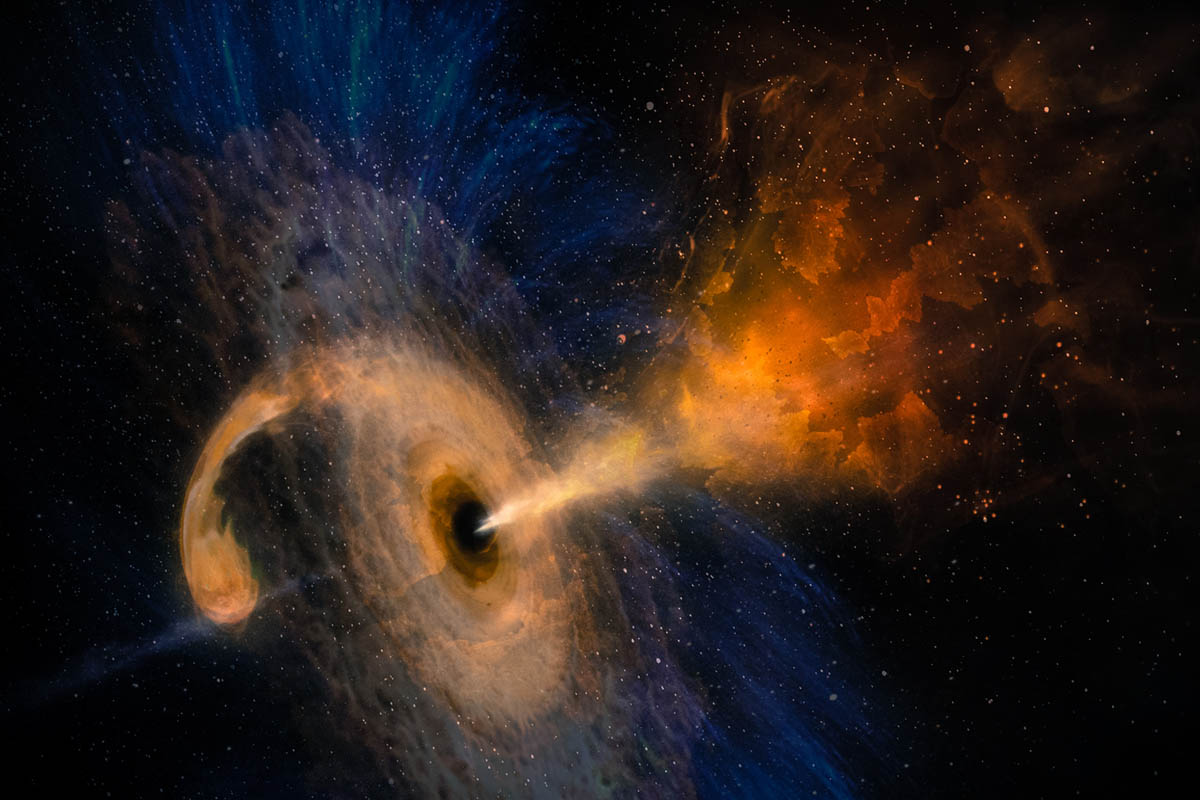Hitherto undetected, Indian scientists have discovered three supermassive black holes merging together at the centre of a newly discovered galaxy.
The discovery was made by a team of researchers from the Indian Institute of Astrophysics comprising Jyoti Yadav, Mousumi Das, and Sudhanshu Barway along with Francoise Combes of College de France, Chaire Galaxies et Cosmologie, Paris.
During their study of a known interacting galaxy pair, NGC7733, and NGC7734, the scientists detected unusual emissions from the centre of NGC7734 and a large, bright clump along the northern arm of NGC7733. On further investigations, it was found that the clump is moving with a different velocity compared to the galaxy NGC7733 itself. The scientists found that this clump was not a part of NGC7733; rather, it was a small separate galaxy behind the arm and named it galaxy NGC7733N.
‘This rare occurrence in our nearby Universe indicates that small merging groups are ideal laboratories to detect multiple accreting supermassive black holes and increases the possibility of detecting such rare occurrences,’ the scientists pointed out.
According to scientists, supermassive black holes are difficult to detect because they do not emit any light. But they can reveal their presence by interacting with their surroundings. When the dust and gas from the surroundings fall onto a supermassive black hole, some of the mass is swallowed by the black hole, but some of it is converted into energy and emitted as electromagnetic radiation that makes the black hole appear very luminous. All these ultimately contribute to the growth of the medium around the galaxy and ultimately the evolution of the galaxy itself.
The study by Indian scientists has been published as a letter in the journal Astronomy and Astrophysics, used data from the Ultraviolet Imaging Telescope (UVIT) onboard the first Indian space observatory ASTROSAT, the European integral field optical telescope called MUSE mounted on the Very Large Telescope (VLT) in Chile and infrared images from the optical telescope (IRSF) in South Africa.
‘The UV and H-alpha images also supported the presence of the third galaxy by revealing star formation along with the tidal tails, which could have formed from the merger of NGC7733N with the larger galaxy. Each of the galaxies hosts an active supermassive black hole in their nucleus and hence form a very rare triple AGN system, according to the researchers.











